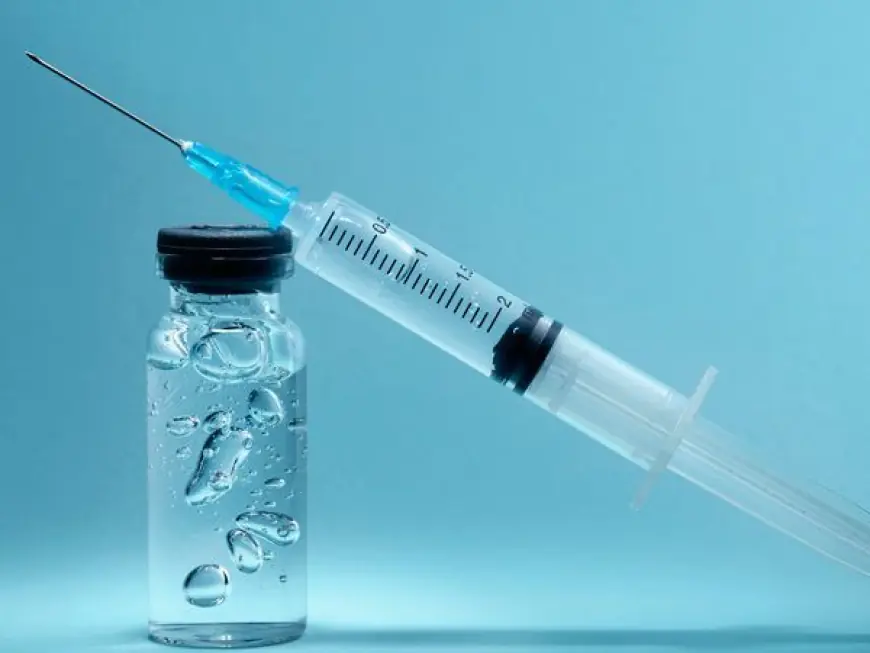Toradol Injection: Uses, Benefits, and Safety Considerations

Introduction to Toradol Injection
A Toradol injection is a powerful non-steroidal anti-inflammatory drug (NSAID) used to relieve moderate to severe pain. It is commonly administered in hospital settings, urgent care clinics, and outpatient medical facilities for short-term pain management. Unlike opioids, Toradol (ketorolac tromethamine) does not cause dependency, making it a preferred choice for acute pain relief.
What is a Toradol Injection?
A Toradol injection contains ketorolac tromethamine, a potent NSAID that works by reducing inflammation, swelling, and pain. It is frequently prescribed for post-surgical pain, migraines, kidney stones, and musculoskeletal injuries. The injection is administered intramuscularly (IM) or intravenously (IV), allowing for fast-acting relief.
Key Benefits of Toradol Injection
-
Rapid Pain Relief – Works within 30 minutes of administration.
-
Non-Opioid Alternative – Effective for pain management without the risk of addiction.
-
Reduces Inflammation – Ideal for conditions involving swelling and discomfort.
-
Short-Term Use – Typically prescribed for no more than 5 days.
-
Versatile Applications – Used in orthopedic, post-operative, emergency medicine, and dental procedures.
How Does Toradol Work?
Toradol works by inhibiting cyclooxygenase (COX-1 and COX-2) enzymes, which are responsible for producing prostaglandins—compounds that trigger pain and inflammation. By blocking these enzymes, Toradol reduces pain, fever, and swelling without the sedative effects of opioids.
Common Uses of Toradol Injection
1. Post-Surgical Pain Management
Toradol injections are frequently used after surgeries to control moderate to severe pain without resorting to narcotics.
2. Migraine and Severe Headaches
For patients experiencing intense migraines, Toradol provides rapid relief by reducing inflammation in blood vessels.
3. Kidney Stones
Toradol injections are highly effective in reducing the severe pain caused by kidney stones, often used in emergency departments.
4. Musculoskeletal and Sports Injuries
Athletes suffering from sprains, strains, and joint injuries benefit from Toradol’s anti-inflammatory properties.
5. Dental and Orthopedic Pain
Used in dental extractions, fractures, and joint surgeries, Toradol helps control post-procedural discomfort.
Toradol Injection Dosage and Administration
The dosage and administration of Toradol injections vary based on the patient’s condition, age, and medical history.
Recommended Dosage
|
Patient Type |
Intramuscular (IM) Dose |
Intravenous (IV) Dose |
|
Adults (Under 65) |
60 mg (single dose) or 30 mg every 6 hours |
30 mg every 6 hours |
|
Elderly (Over 65) or Kidney Disease Patients |
30 mg (single dose) or 15 mg every 6 hours |
15 mg every 6 hours |
|
Maximum Daily Dose |
120 mg/day (Adults) |
60 mg/day (Elderly or Kidney Patients) |
Note: Toradol should not be used for more than 5 consecutive days due to the risk of severe side effects.
Potential Side Effects of Toradol Injection
While Toradol injections provide effective pain relief, they can cause certain side effects, especially when used improperly.
Common Side Effects
-
Nausea and Vomiting
-
Dizziness or Drowsiness
-
Injection Site Pain or Redness
-
Indigestion or Heartburn
-
Fluid Retention or Swelling
Serious Side Effects (Seek Medical Attention)
-
Gastrointestinal Bleeding – Long-term use increases the risk of stomach ulcers and internal bleeding.
-
Kidney Damage – High doses can impair kidney function.
-
Heart Risks – NSAIDs may increase the risk of heart attacks and strokes.
-
Allergic Reactions – Severe reactions include rash, difficulty breathing, and swelling.
Who Should Avoid Toradol Injections?
Toradol is not suitable for everyone. Patients with the following conditions should avoid its use:
-
Active Stomach Ulcers or Bleeding Disorders
-
Severe Kidney or Liver Disease
-
History of Heart Disease or Stroke
-
Pregnant Women in the Third Trimester
-
Allergic Reactions to NSAIDs (Aspirin, Ibuprofen, Naproxen, etc.)
Toradol vs. Opioids: Which is Better?
Many patients wonder whether Toradol is a better pain reliever than opioids like morphine or oxycodone. Below is a comparison of Toradol vs. Opioids:
|
Feature |
Toradol |
Opioids (Morphine, Oxycodone) |
|
Risk of Addiction |
No |
Yes |
|
Anti-Inflammatory Properties |
Yes |
No |
|
Effectiveness for Severe Pain |
Moderate to High |
Very High |
|
Side Effects |
Stomach irritation, kidney risk |
Respiratory depression, dependency |
|
Maximum Duration of Use |
5 days |
Varies (weeks to months) |
Where Can I Get a Toradol Injection Near Me?
If you are searching for “Toradol injection near me”, you can find it at various medical facilities and urgent care centers.
Locations Offering Toradol Injections
-
Hospitals and Emergency Rooms – Often used for post-surgical or acute pain management.
-
Urgent Care Clinics – Ideal for migraines, kidney stones, and injuries.
-
Pain Management Centers – Specialized clinics offering Toradol for chronic conditions.
-
Doctor’s Offices and Outpatient Facilities – Available for controlled administration.
Conclusion
A Toradol injection is a fast-acting, non-opioid pain relief option used for acute pain management in various medical settings. It is effective in post-surgical pain, migraines, kidney stones, and sports injuries, making it a preferred choice for healthcare providers. However, its use is limited to 5 days due to potential side effects and health risks. Patients should always consult with a healthcare provider before receiving a Toradol injection to ensure safety and effectiveness.
What's Your Reaction?
 Like
0
Like
0
 Dislike
0
Dislike
0
 Love
0
Love
0
 Funny
0
Funny
0
 Angry
0
Angry
0
 Sad
0
Sad
0
 Wow
0
Wow
0















































